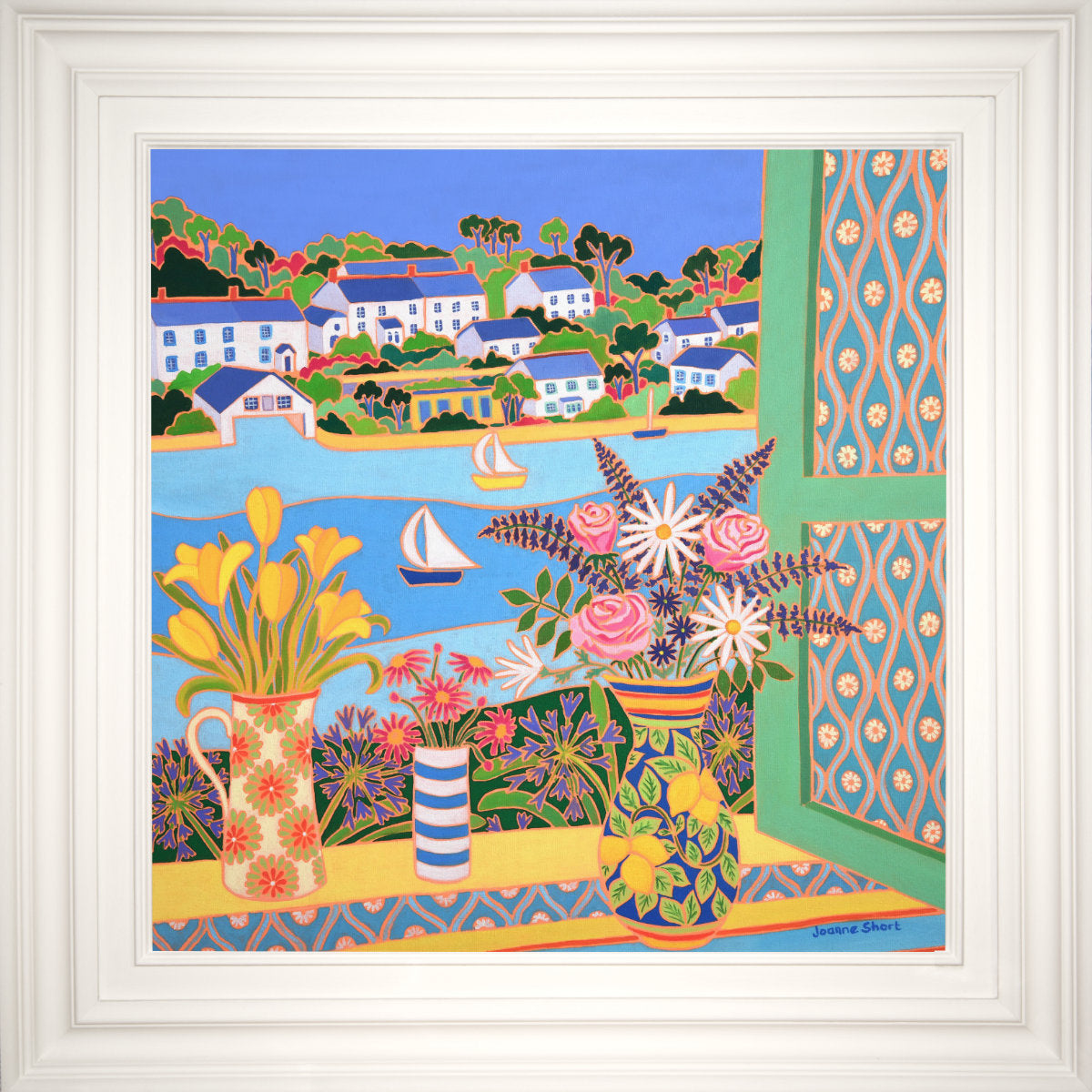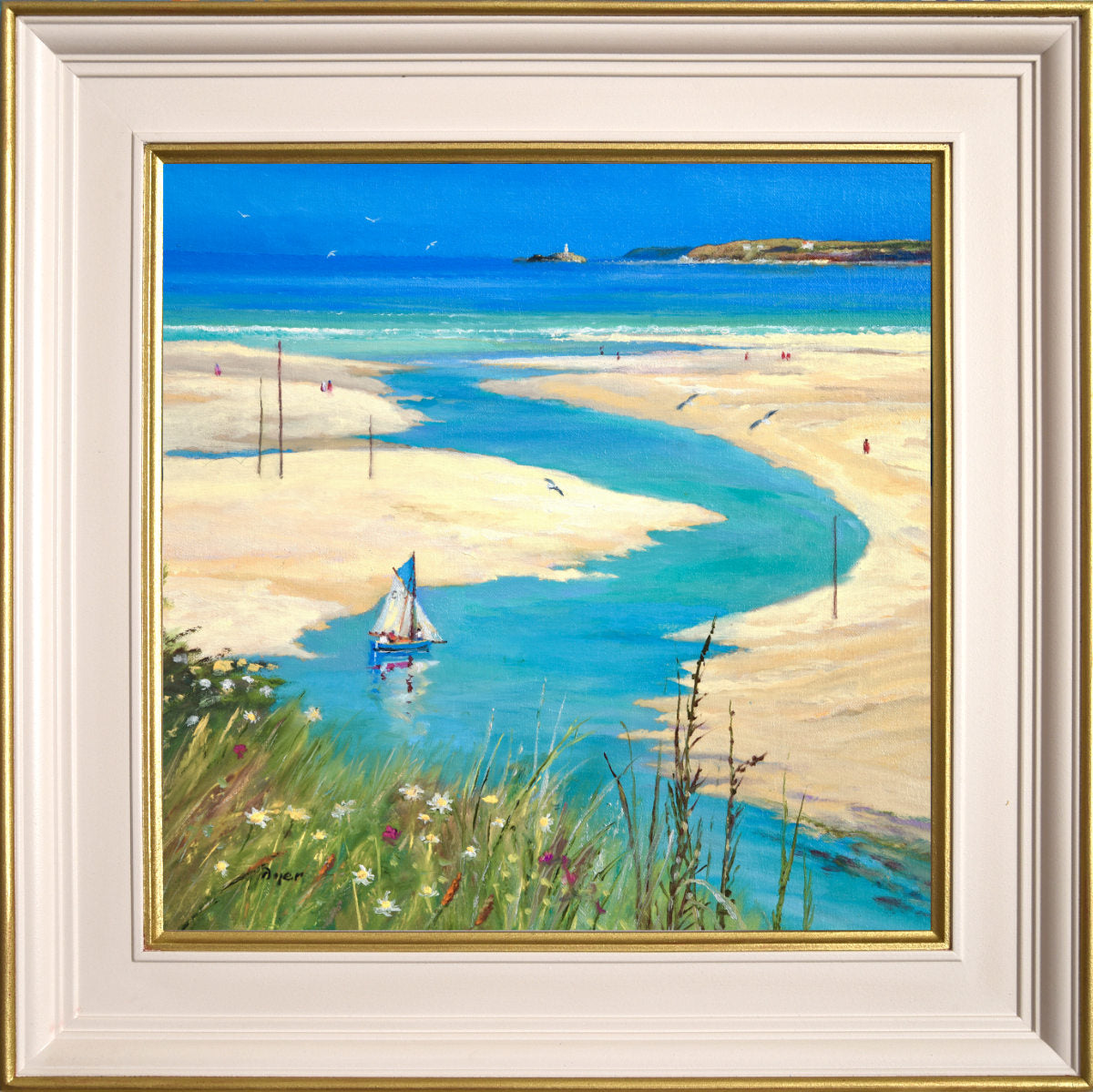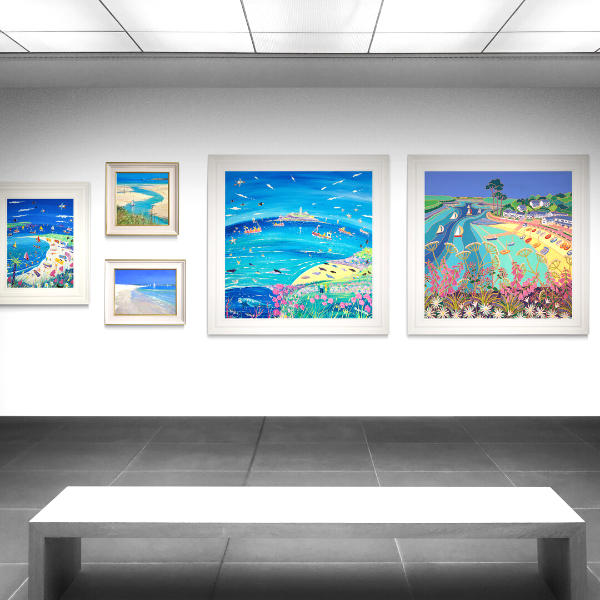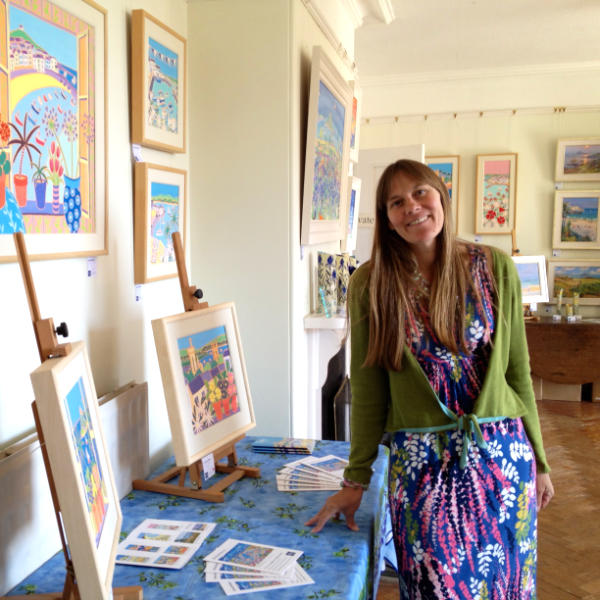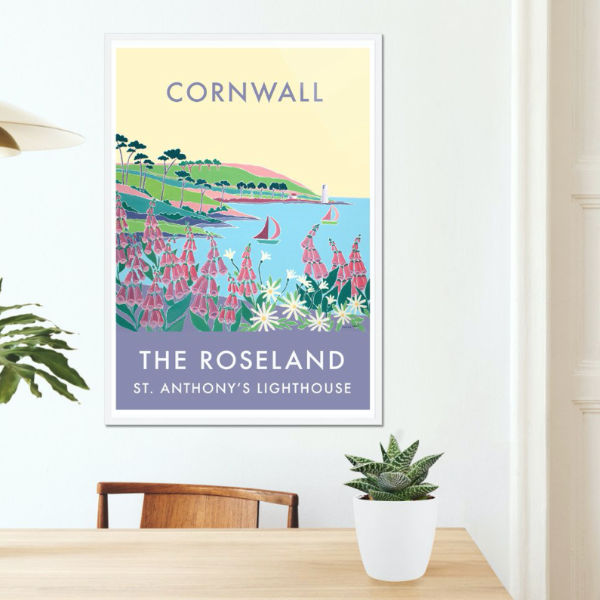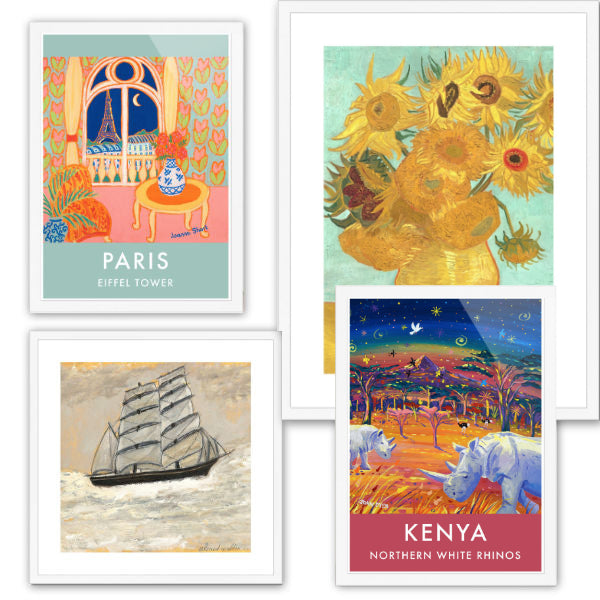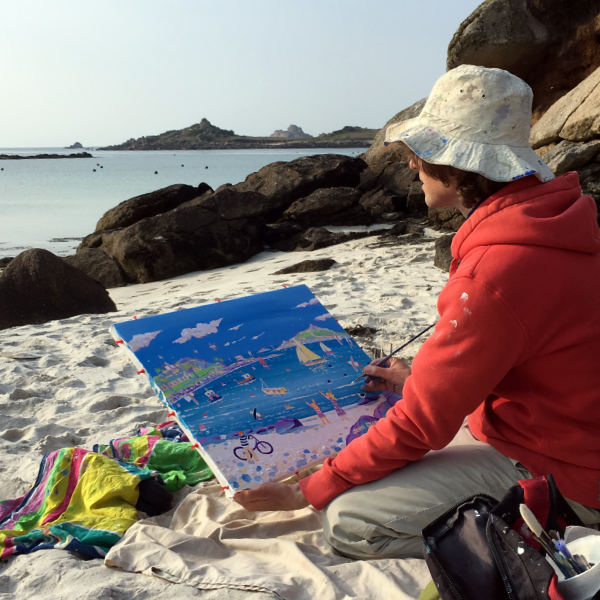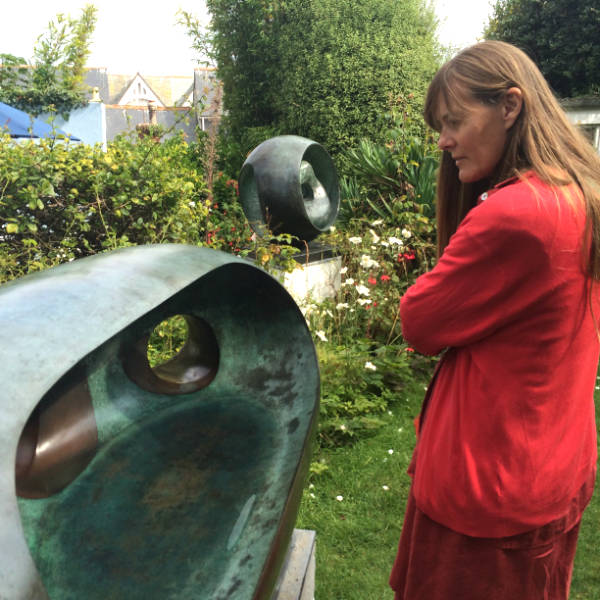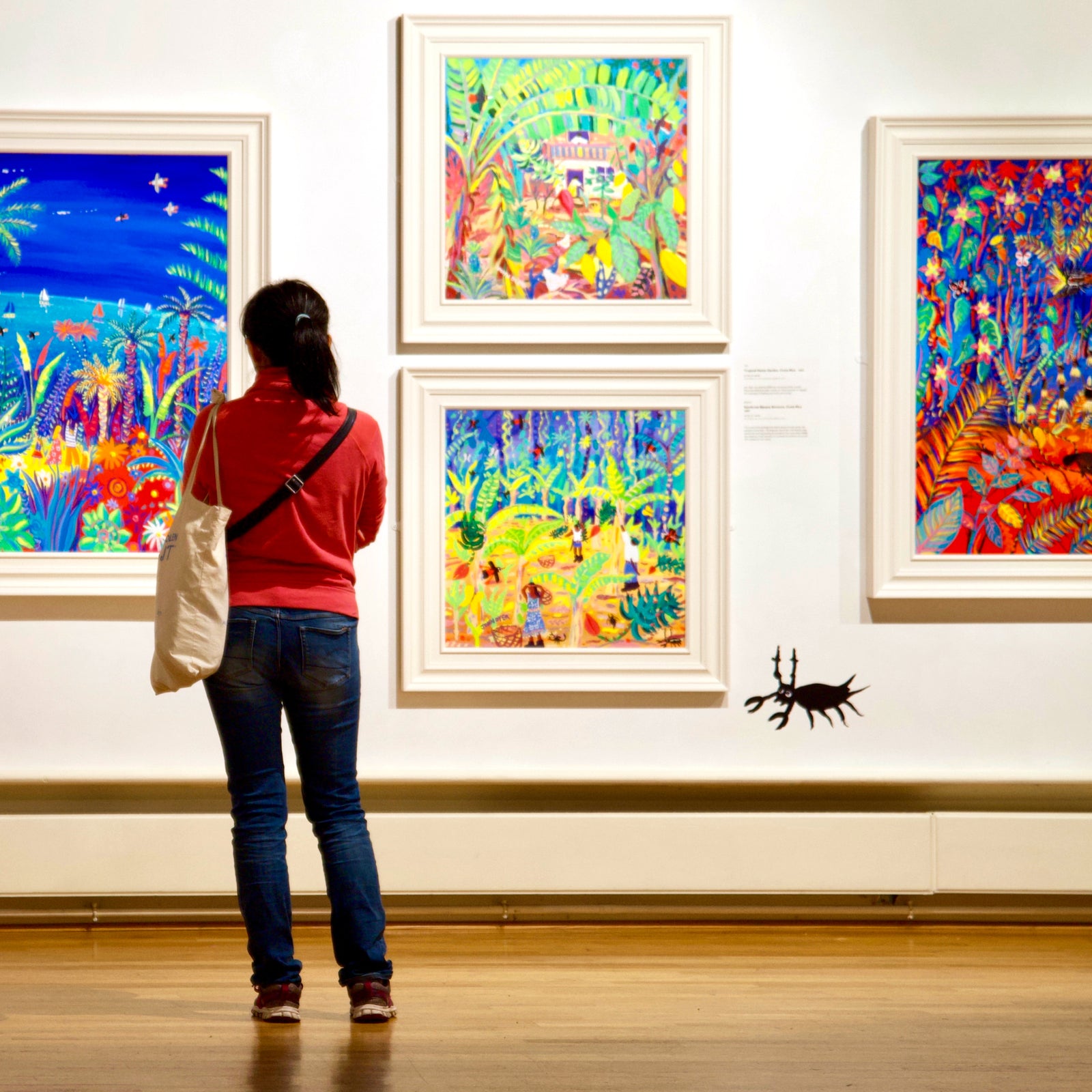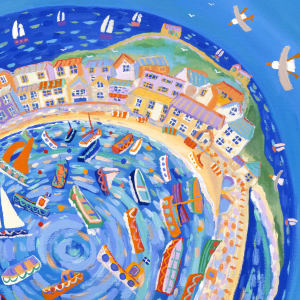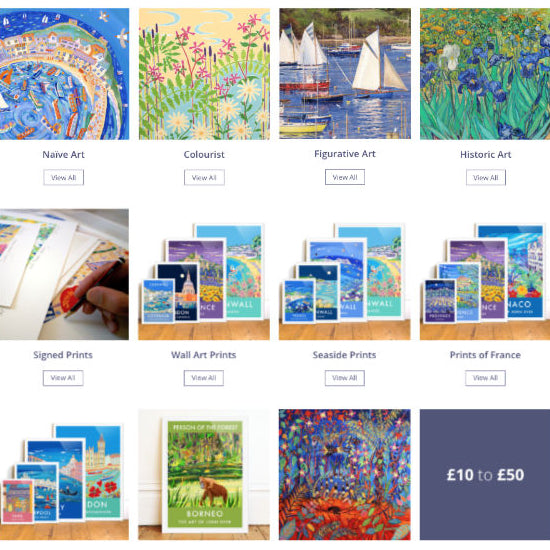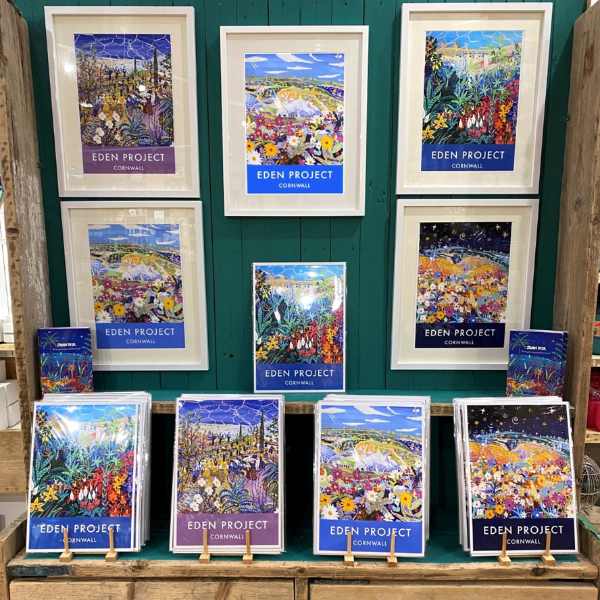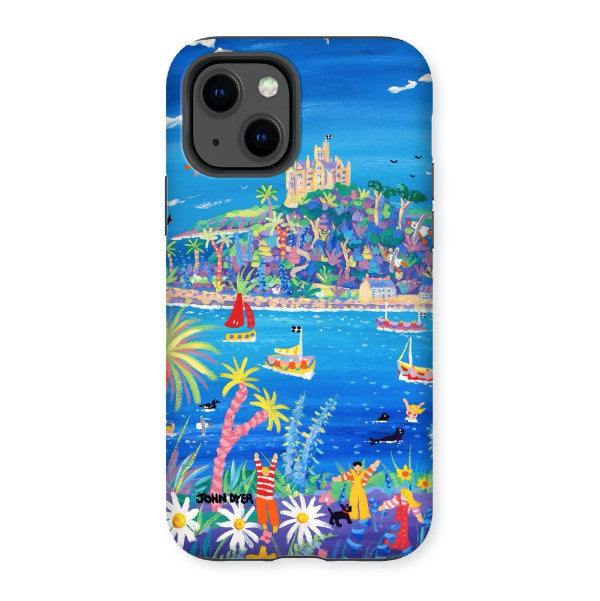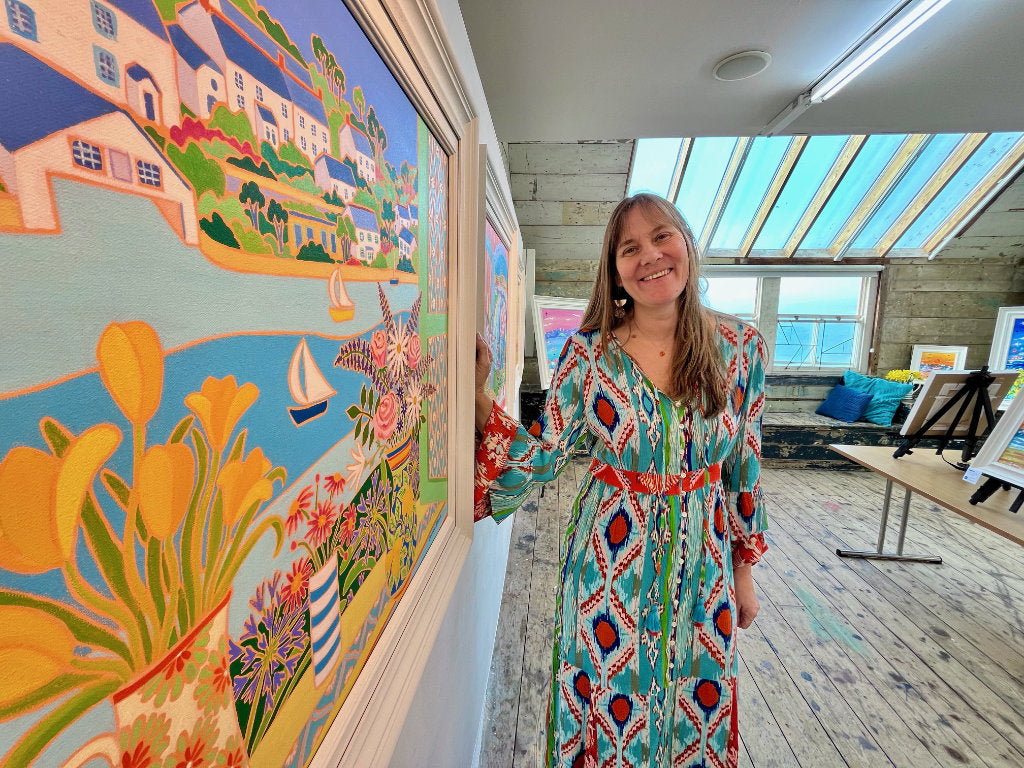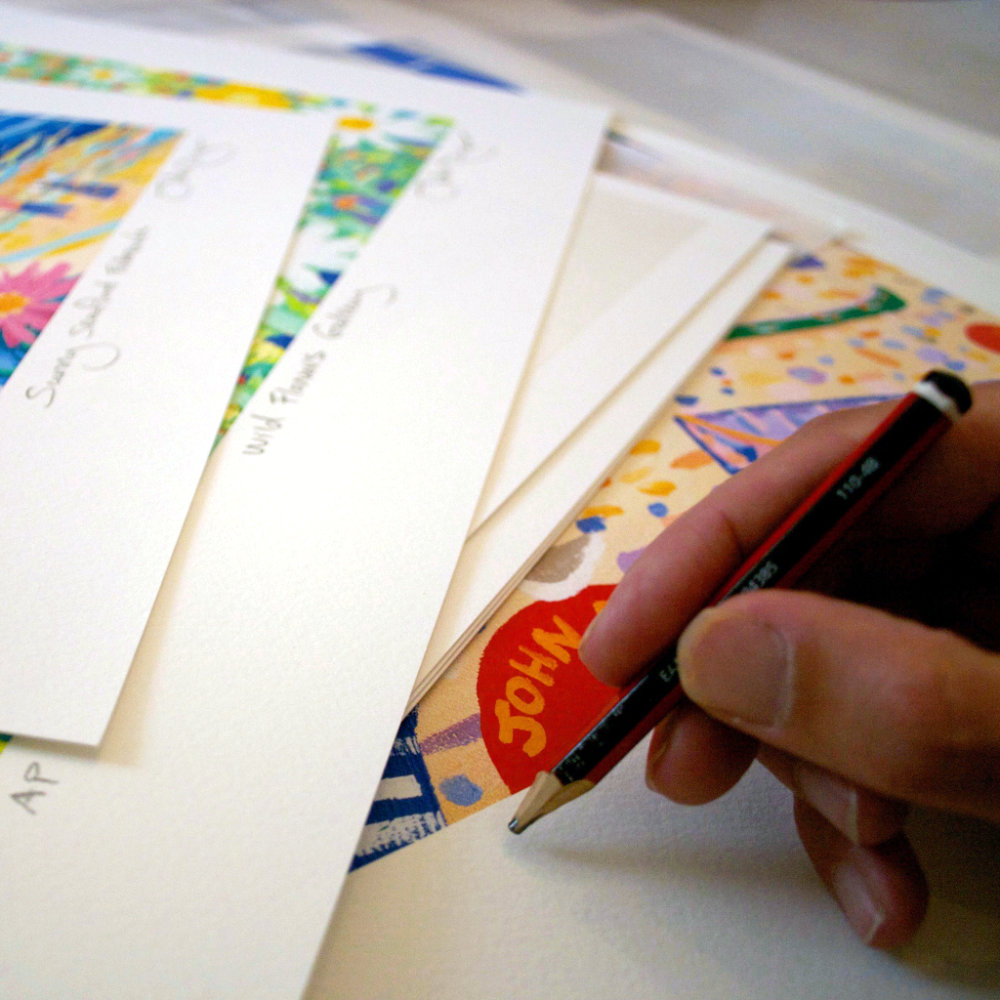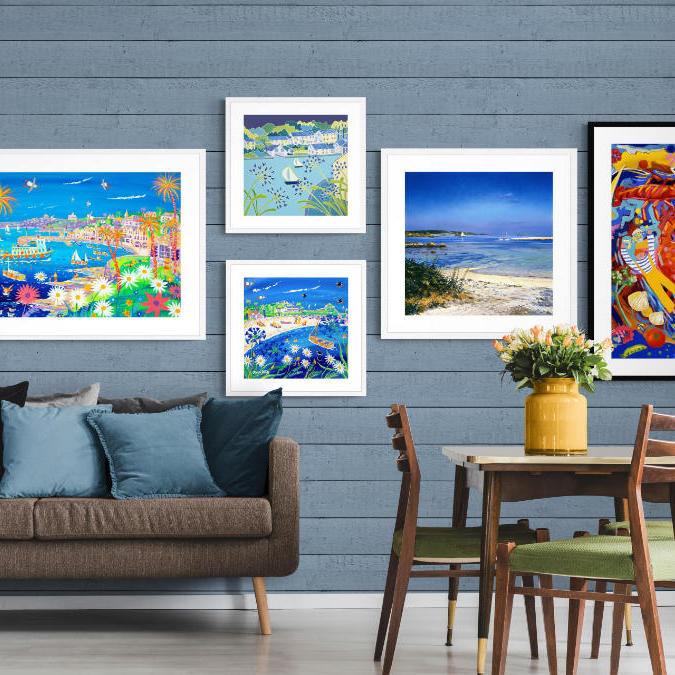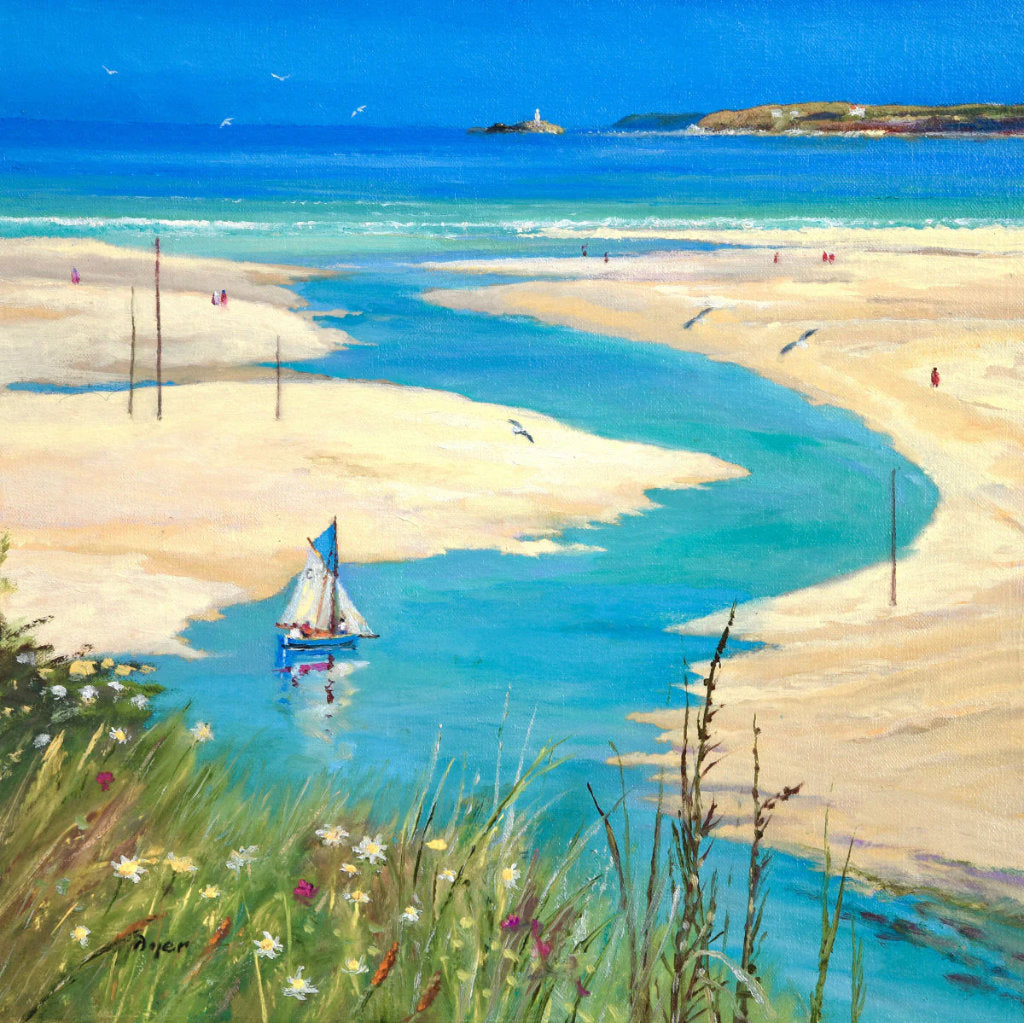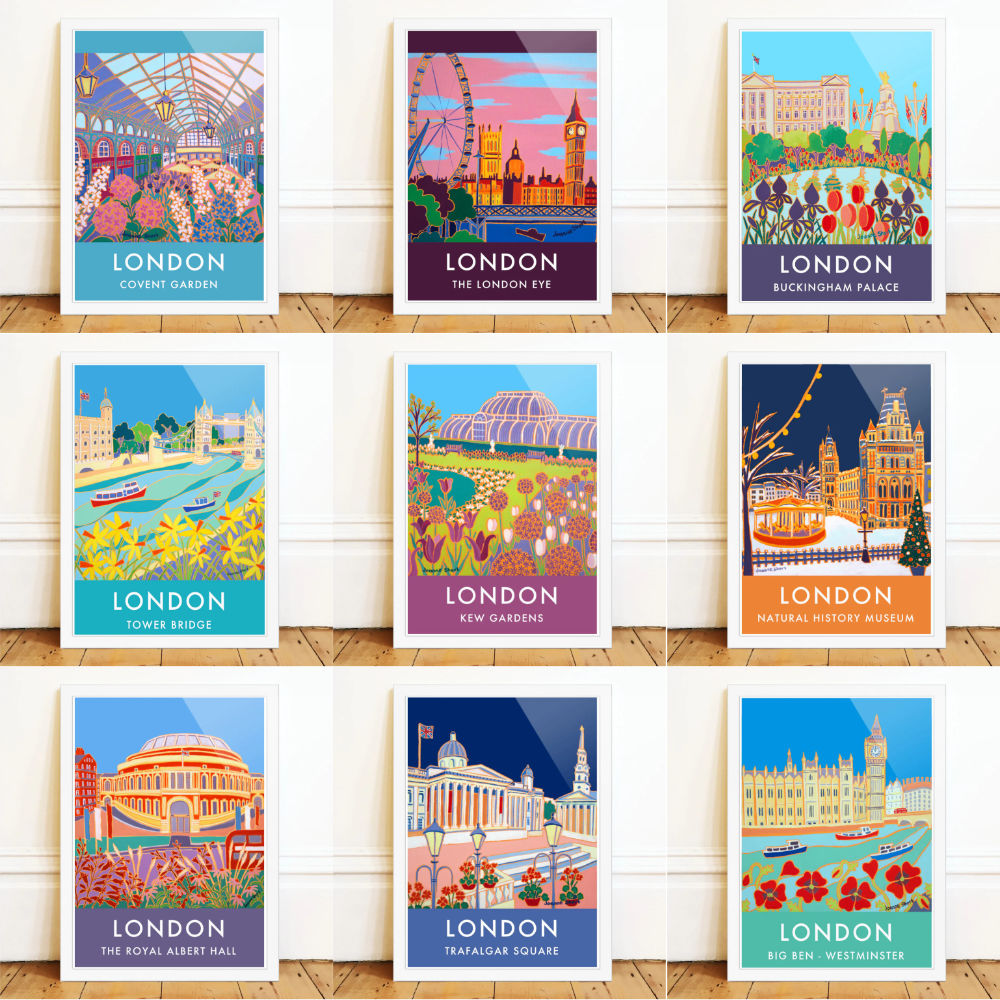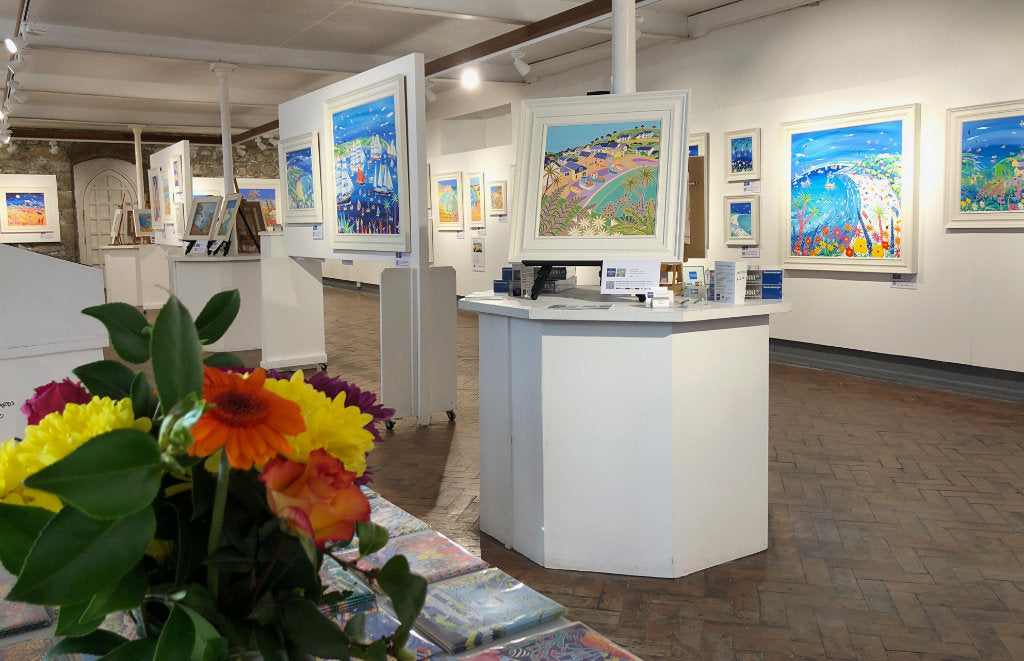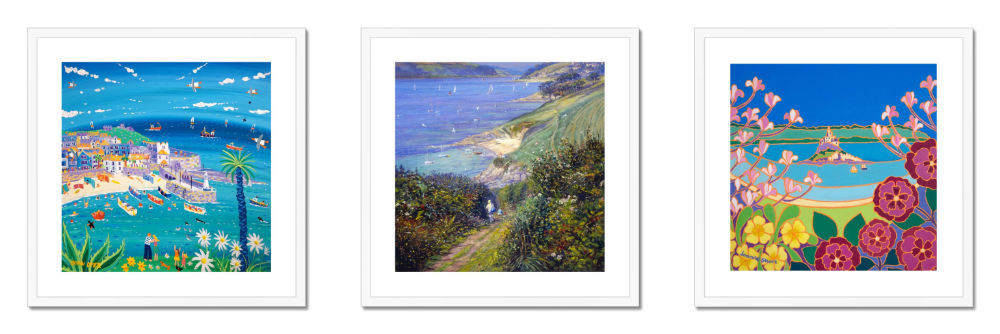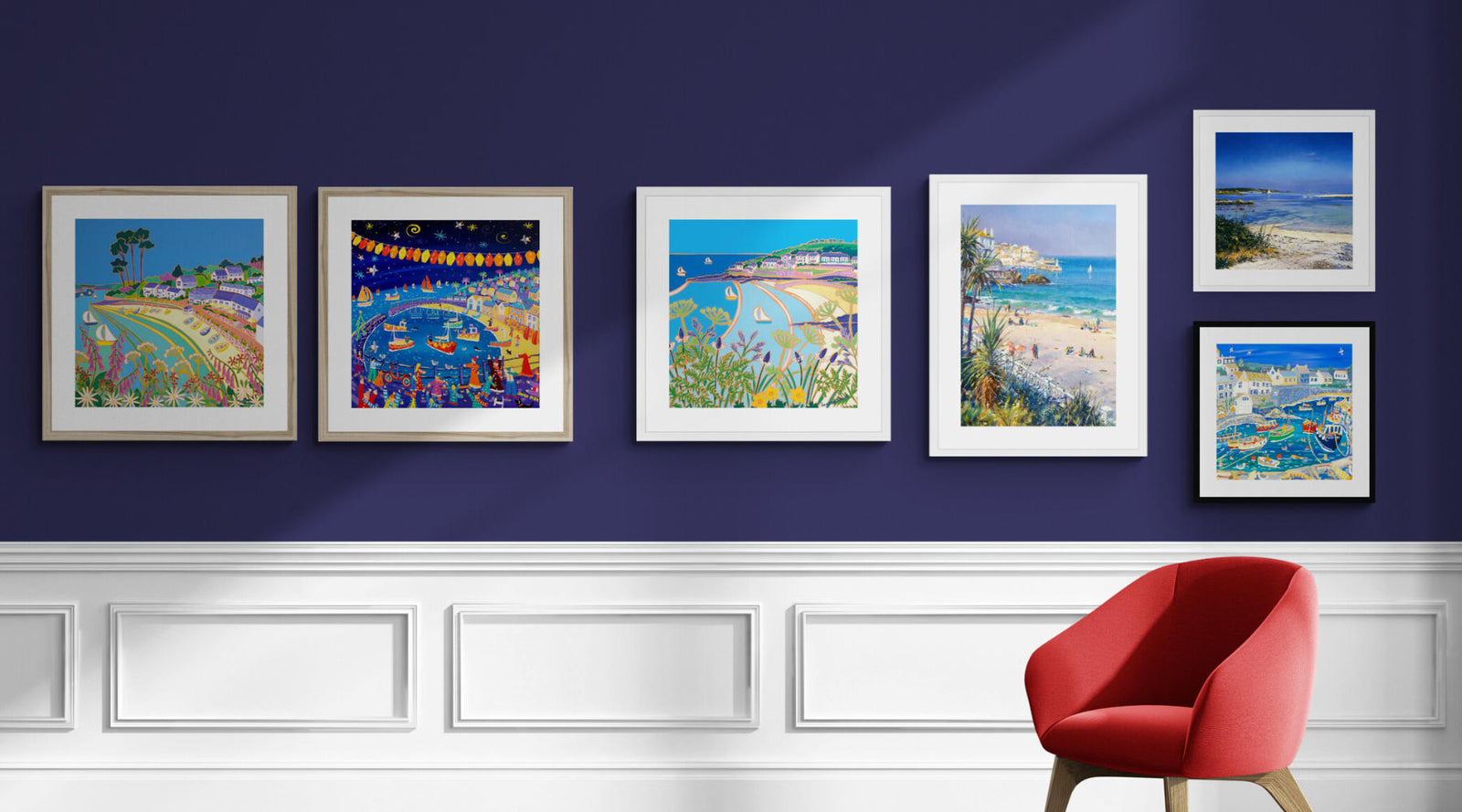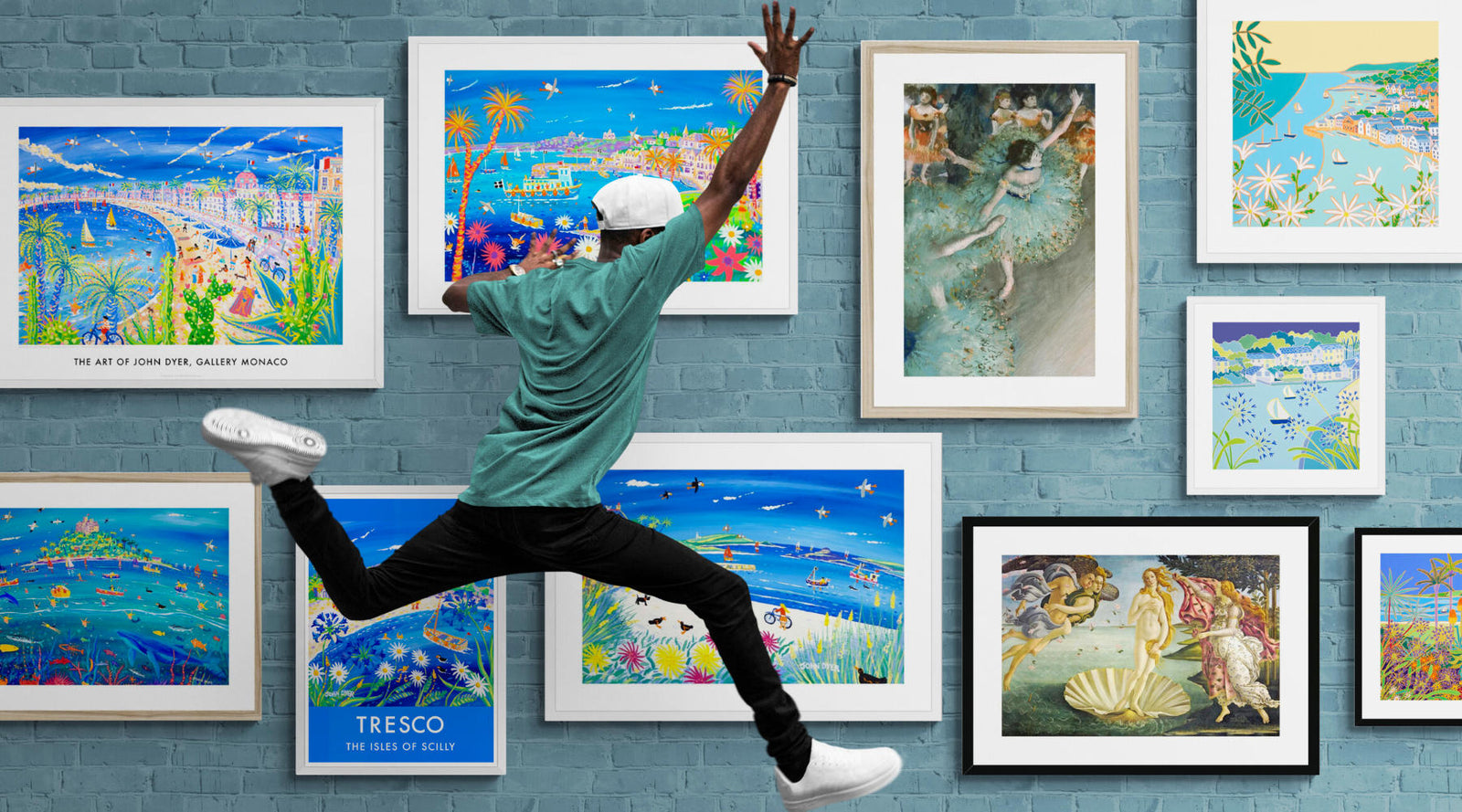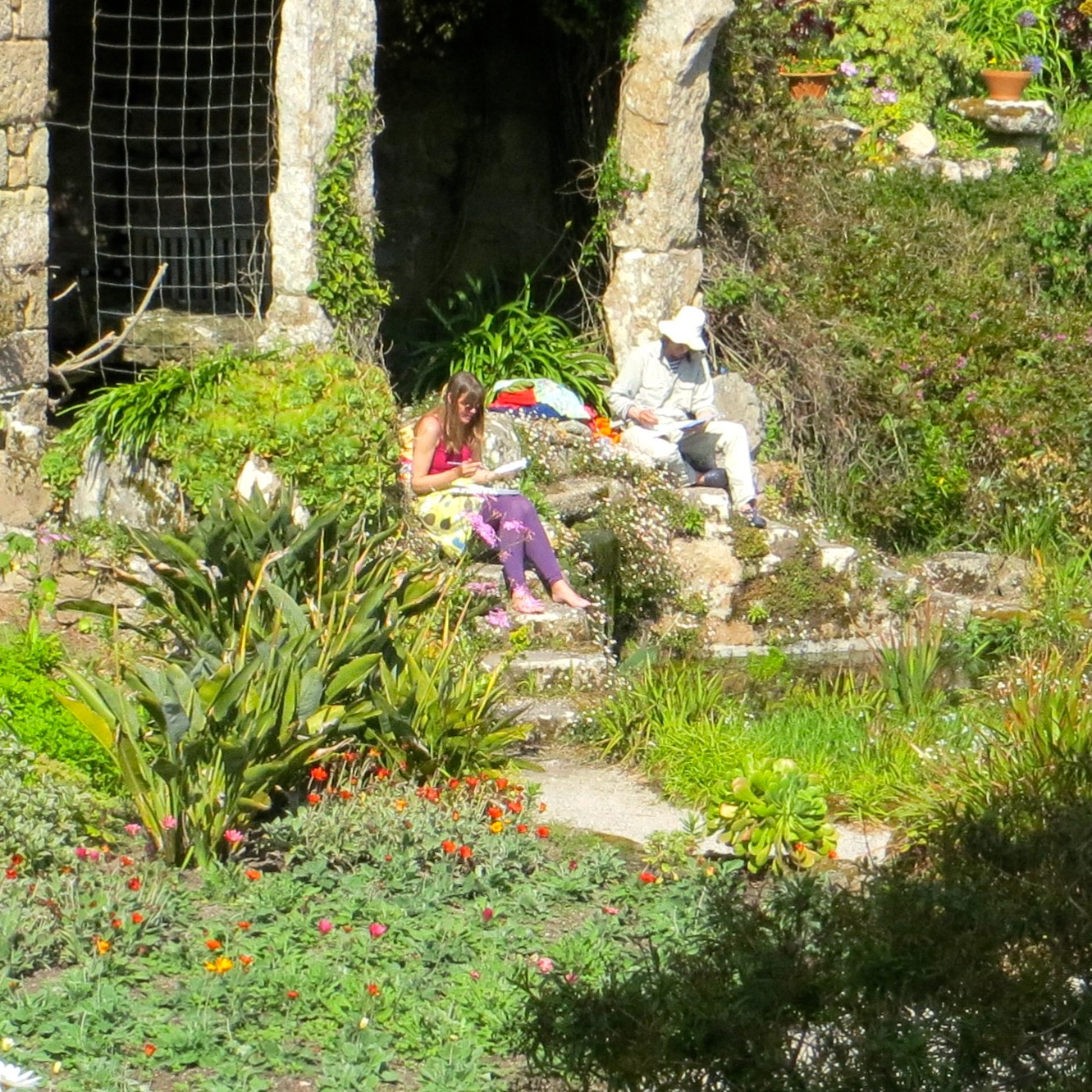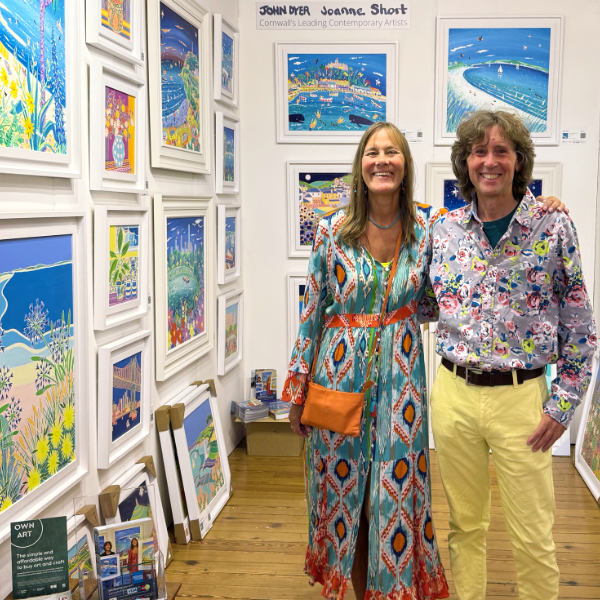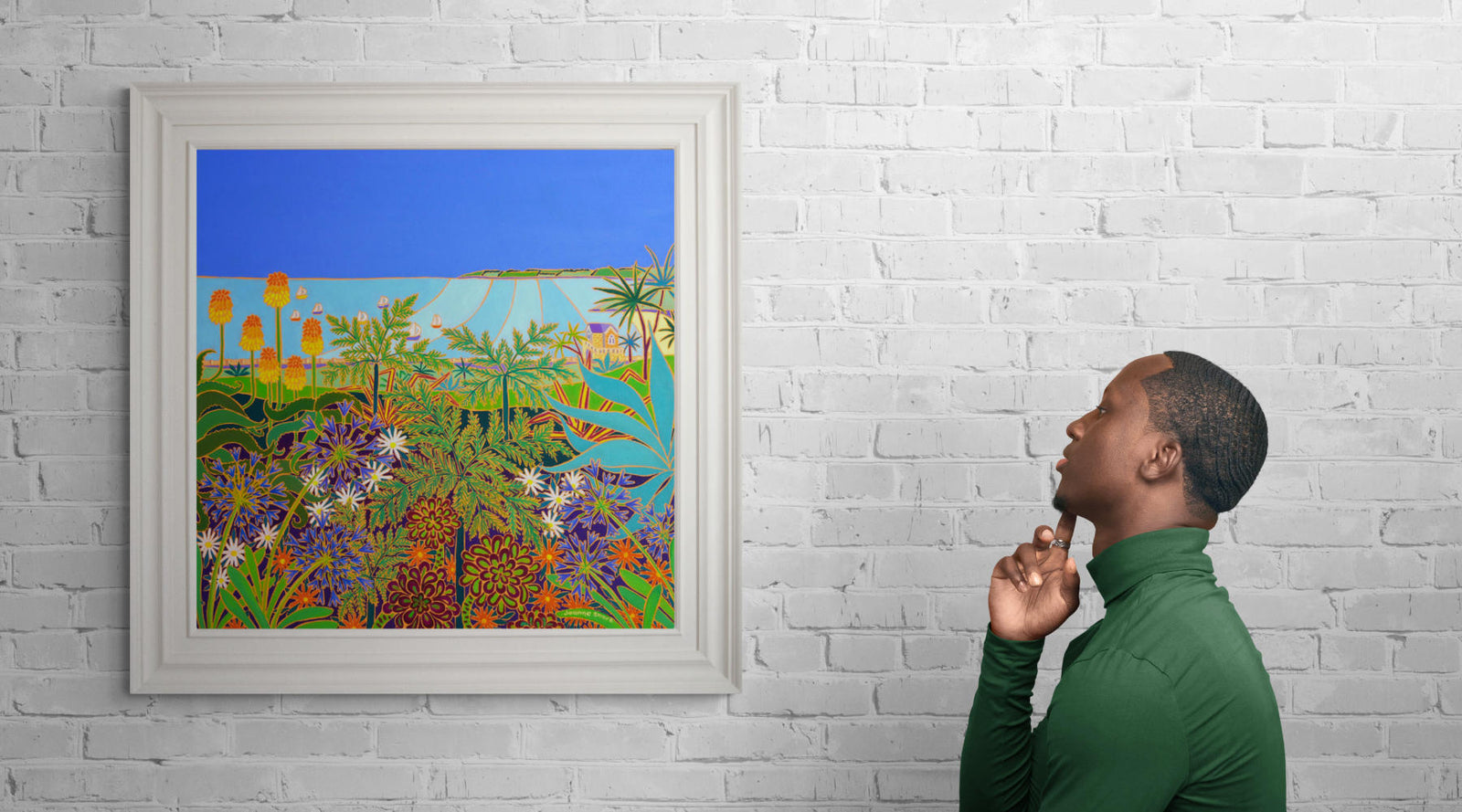
Above: Original oil painting by Cornish artist Joanne Short. Exhibited as part of the 'On The Beach' Exhibition in St Ives. Buy this painting online.
When searching for ‘art gallery art’ you’re likely looking for an introduction to the standout pieces displayed in galleries. In this guide, we examine the nuanced world of gallery art specifically through British and Cornish lenses. Expect to uncover the finesse of original pieces, the gravitas of historic art, and the personal touch of the artists—without leaving your seat. This is your portal to the multi-layered experience that ‘art gallery art’ offers, a prelude to what you may encounter on a gallery visit or when seeking to adorn your own walls.
Key Takeaways
-
Art galleries offer a broad range of experiences, from original and historical pieces that reflect the artist’s unique creative process and past art periods to curated exhibitions that showcase both local and international talent.
-
The British art scene, particularly Cornish art, has a rich legacy that continues to inspire contemporary artists who capture the cultural essence and iconic scenery of Cornwall, such as the renowned figurative artist Ted Dyer and his son John Dyer.
-
Art is not confined to public gallery spaces as high-quality prints and reproductions enable individuals to enjoy iconic works at home, and supporting local artists has the dual benefit of enriching one’s personal space and contributing to the local art economy. The John Dyer Gallery has a selection of prints of iconic paintings available for sale, including works by Monet, Van Gogh, Cézanne, Gustav Klimt and even Leonardo da Vinci
Exploring Art Gallery Paintings

Art gallery paintings offer a unique opportunity to explore the diverse styles and techniques of the art world. Each painting tells a story, capturing the artist’s vision and interpretation of the world around them. Whether it’s a mesmerising landscape, a captivating portrait, or a thought-provoking abstract piece, gallery paintings provide a visual feast for art enthusiasts. The beauty of art galleries lies in their variety. From original art pieces that offer a glimpse into the artist’s unique perspective to historical masterpieces that transport us back in time, art galleries are a gateway to a world of creativity and inspiration.
The British art scene has been significantly influenced by the rich history of Cornish art. Cornwall has been a renowned centre for art since the nineteenth century, producing several prominent artists and shaping the region’s cultural identity. The scenery of Cornwall, with its dramatic coastlines and picturesque landscapes, has inspired countless works of art, captured beautifully in the artwork of many renowned artists. Many of these pieces can be seen and enjoyed at Tate St Ives, Penlee House Gallery in Penzance and Falmouth Art Gallery.
Historical art, with its high-quality reproductions of iconic paintings by renowned artists, is integral to the offerings of art galleries. These masterpieces provide an opportunity to experience art from different periods and styles, allowing us to appreciate the skills and creativity of artists from the past.
Original Art
Any art gallery is fundamentally defined by its collection of original art. It represents the artist’s unique vision and creative process, captured in a tangible form. Different artists offer distinctive viewpoints through their exceptional utilisation of paint and colour, effectively capturing the essence and quality of light in Cornwall, which distinguishes their original art. This unique approach to art is what makes original art so captivating. It offers a window into the artist’s world, inviting us to see things from their perspective.
Above: 'High Summer, Hayle Sands', 14x14 inches oil on canvas. Painting by Cornish Artist Ted Dyer
Ted Dyer, a renowned figurative artist, is particularly known for his depictions of Cornwall’s distinctive light. His paintings often portray peaceful coastal scenes, featuring serene harbours with resting boats and individuals enjoying the scenic landscape. These images not only highlight Ted Dyer’s artistic skills but also capture the beauty and charm of Cornwall. Through his artwork, we can explore Cornwall’s picturesque surroundings and experience its unique light and atmosphere.
Cornish Art
Cornish art is distinguished by its significant historical background and importance. Cornwall has been a global hub for fine art since the 19th century, with influential artists such as Ben Nicholsoncontributing to its reputation. This rich artistic heritage is reflected in the works of contemporary Cornish artists, who continue to capture the beauty and culture of Cornwall in their artwork.
The John Dyer Gallery holds a prominent position in the realm of Cornish art, providing a platform for a diverse range of artworks linked to Cornwall. The gallery’s magazine art blog offers a wealth of knowledge about:
-
artists
-
paintings
-
prints
-
art history
-
specific details about Cornwall and its landscape
This gives art enthusiasts a deeper understanding of Cornish art.
At the John Dyer Gallery, you can expect to find a wide selection of artwork suitable for your home, business and commercial interiors. It also provides opportunities for individuals to serve as ambassadors for the gallery, promoting the gallery’s art to enhance engagement within the art community.
Historical Art
With historical art, we are granted a fascinating window into the past, immersing us in the art world across various periods and styles. With high-quality reproductions of iconic paintings by famous artists, historical art makes it possible to bring a piece of art history into your own home or workspace. The historical art print collection at The John Dyer Gallery includes iconic prints by:
The highest quality museum-grade archival inks and fine art watercolour paper are used to ensure longevity and accuracy.
Above: A selection of open edition historical art prints available from The John Dyer Gallery
This meticulous process not only maintains the ageing, paint texture, and character of the originals but also ensures that the prints meet the highest standards of quality. Collectors can therefore anticipate receiving open-edition fine art prints of historical paintings that match the original’s colours as closely as possible, printed on a high quality paper.
Celebrating Artists

Above: A Meeting of The Crypt Group, 1947. Peter Lanyon, Bryan Winter, Sven Berlin, Wilhelmina Barnes-Graham, John Wells and Guido Morris. Photograph: Central office of information, London
The essence of art extends beyond the final product that adorns gallery walls. It’s also about the creative minds behind the artwork. Celebrating artists means acknowledging their talent, creativity, and the significant impact they have made on the art world. Influential St Ives based painters like Ben Nicholson, Barbara Hepworth, Patrick Heron, John Wells and Anthony Frost, to name but a few, challenged traditional art and introduced new possibilities in art expression, shaping the art world as we know it today.

Above: Artist Joanne Short at work in her studio in Falmouth, 1998
However, it’s not just the pioneers of global art movements who deserve recognition. More recently, local talents, like Joanne Short, John Dyer, and Ted Dyer, have also made significant contributions to the art world. Their works, ranging from vibrant colourist oil paintings to distinctive artworks and acclaimed impressionistic pieces, exemplify the distinct style and cultural essence of Cornwall. Celebrating these artists is about acknowledging their talent and creativity, and appreciating the unique perspective they bring to the art world.
Pioneering Painters
The art world has been transformed by the innovative techniques and groundbreaking approaches of pioneering painters. They have challenged traditional art norms and inspired countless artists, leaving an indelible mark on the art world. These artists have served as catalysts for change, pushing boundaries and exploring new possibilities in art.
One such pioneering painter is John Dyer, a prominent contemporary naive painter based in the UK. His work has been recognised and exhibited by national permanent collections of art and organisations such as:
-
the National Trust
-
the Eden Project
-
Save the Children
-
Falmouth Art Gallery
His paintings capture the distinctive quality of life in Cornwall, reflecting his unique perspective and artistic style. His work serves as a testament to the transformative power of pioneering painters, demonstrating how they have shaped and influenced the world of art. His art projects embrace the education of children, introducing them to the possibilities of extinctions within the animal and plant kingdom, all through the medium of paint.
Exhibition Experiences
Art exhibitions provide artists a distinctive platform to display their work, while allowing viewers to dive into a universe of creativity and inspiration. From collections themed around London to global gallery events and free exhibitions, these events provide a diverse range of experiences that celebrate the beauty and diversity of art. Artists represented by The John Dyer Gallery have been supported by venues such as the National Trust’s St Michael’s Mount, the Hôtel Hermitage in Monaco, and the award-winning Falmouth Art Gallery. All these venues have have hosted physical art exhibitions, providing a platform for these artists to showcase their talent.
Exhibition experiences with The John Dyer Gallery are about more than just viewing art; they are about engaging with the art and the narratives it presents. They provide an opportunity to:
-
Delve deeper into the themes and stories behind the art - especially in John Dyer's 'Last Chance to Paint' project
-
Offer a richer and more immersive experience
-
Explore the beautiful Cornish landscape through art
-
Attend renowned global gallery events
These experiences offer a unique opportunity to engage with art on a deeper level.
London Calling
Art serves as a potent medium to navigate and comprehend the world we inhabit. Through art, we can explore the vibrant city of London, capturing its unique spirit and culture. The London collection embodies the theme of celebrating London life, culture, and architecture through vintage-style art prints and posters. These prints and posters showcase renowned London landmarks, including:
These artworks capture the essence of the city’s location through paintings of the capital city by Joanne Short.
Above: Vintage style posters of London by Artist Joanne Short
Art provides a unique perspective on the world, allowing us to see familiar places through a different lens. Whether it’s the hustle and bustle of the city or the tranquility of a serene harbour, these prints and posters capture the diversity and vibrancy of London. The London collection offers a unique opportunity to explore the city through art, bringing the spirit of London into your own home.
Global Gallery Events
The finest art from around the globe is highlighted in global gallery events such as:
-
Art Basel Miami Beach
-
TEFAF (The European Fine Art Foundation)
-
ARCOmadrid an international contemporary art fair
-
Masterpiece London
-
La Biennale Paris
-
Frieze Art Fair, London
-
The Armory Show, New York
These international events offer an unparalleled platform for contemporary artists to showcase their work and for art enthusiasts to discover new artists and styles. Global gallery events are carefully curated and organised, with a vast selection of artworks that form a coherent narrative, display a variety of styles and perspectives, engage the audience, and enrich the viewing experience.
These events not only celebrate the diversity and richness of art but also contribute to the global art community by fostering connections between artists, galleries, and art enthusiasts. Whether you’re an artist looking to showcase your work, a gallery owner seeking new talent, or an art enthusiast eager to discover new artists and styles, global gallery events offer a unique opportunity to engage with the global art community.
Free Exhibitions
Free exhibitions at public and commercial art galleries are instrumental in ensuring art’s accessibility to everyone. These exhibitions provide an opportunity for everyone to engage with art, regardless of their financial means. The John Dyer Gallery, for example, provides a range of complimentary art exhibitions, both online and in unique locations. Free exhibitions not only make art more accessible but also foster a sense of community and encourage a broader appreciation of art.

Above: John Dyer retrospective at the Falmouth art gallery, 2018
Free exhibitions also have significant benefits for artists. They provide a platform for artists to showcase their work, reach a wider audience, and receive feedback. This can be invaluable for emerging artists looking to establish their name in the art world. So whether you’re an artist looking to exhibit your work, or an art enthusiast looking for new and exciting art to explore, free exhibitions offer a unique opportunity to engage with the art community.
Behind the Scenes: The Making of Art Gallery Art
Art doesn’t emerge in isolation. It is the result of a complex process that involves creativity, skill, and a deep understanding of art techniques and materials. From the initial idea generation in the artist’s studio to the meticulous process of conservation, the making of art gallery art is a fascinating journey. Each stage of this process, from the artist’s studio to the gallery’s curatorial choices and conservation efforts, plays a crucial role in the creation and exhibition of art.

Above: John Dyer mixing paint on his palette
Creativity breathes to life in an artist’s studio. This space, filled with a diverse range of materials, works-in-progress, and specialised tools, facilitates the art-making process and provides insight into the artist’s personality.
Curatorial choices, on the other hand, shape the narratives and themes of art exhibitions, balancing artistic integrity with public appeal. Conservation efforts ensure the longevity and preservation of art, safeguarding our cultural heritage for future generations.
Artist Studios
The artist’s studio is at the heart of the creative process. It is here that ideas take shape, inspired by the artist’s experiences, observations, and imagination. The studio serves as a sanctuary for the artist, a place where they can experiment, innovate, and create without restrictions. It is in this creative space that the magic of art truly comes to life.
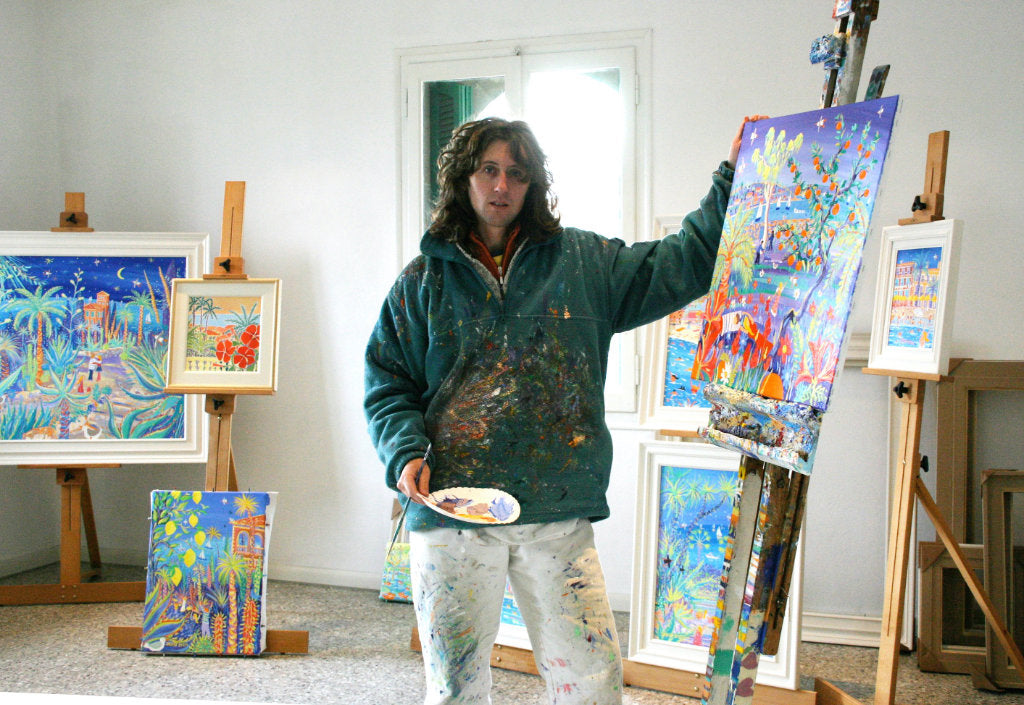
Above: John Dyer in his studio in La Mortola, Italy in 2008
For an artist, the selection of a studio space is a critical decision. The studio needs to facilitate the artist’s workflow, from planning and creation to the display, sale, and storage of their artwork. The important factors to consider when selecting a studio space are:
-
The quality of natural light
-
Ventilation
-
Availability of electrical power for art tools
-
Adaptability of the studio to be modified according to artistic needs
The studio is more than just a workspace; it is an extension of the artist’s mind, reflecting their creative vision and artistic journey. It’s important to note that the environment plays a crucial role in fostering creativity.
Curatorial Choices
The formation of art exhibitions is significantly influenced by curatorial choices. Curators are responsible for:
-
Conceptualising, planning, and organising exhibitions - for example, for our latest exhibition we visited the space, measured and digitally designed the placements of the paintings to help decide the rough number and sizes of artworks for the space
-
Developing captivating narratives that both engage and educate visitors - for the Last Chance to Paint exhibition at The RGS in London we created educational boards and leaflets
-
Carefully selecting artworks, artifacts, and multimedia elements that form a coherent narrative and enrich the viewing experience.

Above: Artist John Dyer at his Exhibition at the Royal Geographical Society
Achieving a balance between artistic integrity and public appeal is a key part of curatorial decision-making. Curators evaluate whether the exhibition theme maintains the integrity of the artist or era, while also catering to the interests of the general public. This balance is crucial in ensuring that art exhibitions are not only enjoyable but also enlightening, offering a rich and immersive experience for visitors.
Above: John Dyer Gallery exhibition at The Crypt Gallery, St Ives, 2023
Conservation Efforts
The preservation and maintenance of historical art in public galleries for future generations heavily relies on conservation efforts.
Conservation is essential for both modern and historical art, ensuring that future generations can appreciate the collection as originally intended.
National Art galleries maintain conservation departments staffed with object conservators who are tasked with the responsibility of caring for, preserving, and restoring sculptures, decorative art, and cultural objects. These professionals collaborate with curators and scientists to oversee conservation treatments including varnish removal, tear repairs, and securing flaking paint. Their work ensures the longevity of the artwork, preserving our cultural heritage for future enjoyment and study.
Bringing Art Home
The presence of art isn’t limited to galleries and museums. With high-quality art prints and reproductions, gallery-inspired decor, and the support of local artists, you can bring the beauty and creativity of art into your own home. Whether you are a seasoned art collector or simply someone who appreciates the beauty of art, bringing art home can enhance your living space and provide a daily source of inspiration.
With art prints and reproductions, iconic paintings and unique perspectives can be appreciated in the comfort of your own home. These prints are created using the highest quality materials, ensuring longevity and accuracy. Gallery-inspired decor can transform your home, reflecting the beauty and creativity of art.
Art Prints and Reproductions
Art prints and reproductions offer a way to enjoy museum-quality art in your own home. These prints and reproductions feature iconic paintings and unique perspectives, bringing the beauty of art into your living space. From famous painting posters & prints to signed artist prints and canvas wall art prints, there is a wide range of options to choose from.
Above: Examples of Open Edition Prints of Cornwall available at The John Dyer Gallery
The available prints here at The John Dyer Gallery feature many of Cornwall’s well-known places, such as:
Additionally, there is a remarkable selection of London art prints and prints of Somerset. These prints are created to meet the high standards of archival museum-quality, ensuring that you can enjoy the beauty of these iconic locations in your own home.
Gallery-Inspired Decor
Incorporating gallery-inspired decor into your home can add a touch of elegance and creativity. Here are some ideas to get you started:
-
Create a diverse gallery wall with a mix of photographs, paintings, and decorative items.
-
Select pieces that reflect the style and aesthetics of your favourite art galleries.
-
Use floating shelves to display small sculptures or art books.
-
Hang large-scale artwork as a focal point in your living room or dining area.
-
Incorporate art-inspired textiles, such as pillows or curtains, into your decor.
-
Install track lighting or picture lights to highlight your artwork.
By incorporating these ideas, you can infuse everyday life with the beauty and creativity of art.
When aiming for a gallery-inspired decor in your home, it is advisable to prioritize larger pieces as focal points and organize smaller pieces around them. Adding a personal touch can be achieved by incorporating:
-
a gallery wall showcasing cherished family photos and holiday memories
-
attention-grabbing concepts
-
picture walls
-
strategic arrangements
Complement these with decorative items like mirrors, baskets, vintage finds, or architectural pieces to infuse the decor with distinctive character.
Supporting Local Artists
By supporting local artists, you:
-
Make a valuable contribution to the local economy
-
Help nurture their creative pursuits
-
Promote their talent within the community
-
Bring home a piece of artwork that is unique and personal
Acquiring artwork from local artists contributes to:
-
the enrichment of the local economy
-
fostering a sense of community spirit
-
providing artists with the resources to sustain and advance their creative endeavours
Whether it’s purchasing their artwork, promoting their craft both within the community and on social media, or serving as an ambassador for a local gallery, there are many ways to support local artists and contribute to the vitality of the local art scene.
Summary
Art is a powerful tool for expression and creativity, and art galleries offer a unique window into this world. British art, with its rich history and vibrant contemporary scene, offers a diverse range of experiences for art enthusiasts. From exploring art gallery paintings and celebrating artists, to immersing yourself in exhibition experiences and going behind the scenes of the art-making process, to bringing art home and supporting local artists, the world of art is as diverse as it is captivating. So why not embark on your own art journey, exploring, appreciating, and supporting the beauty and creativity of art?
Frequently Asked Questions
What is Cornish art?
Cornish art has a significant historical background, with Cornwall being a renowned centre for art since the 19th century. It has produced several prominent artists and has influenced the region's cultural identity.
Who are some pioneering painters in the art world?
Some pioneering painters in the art world are Pablo Picasso, Jackson Pollock, Claude Monet, and Van Gogh, whose innovative techniques have had a significant impact on the art world.
What are global gallery events?
Global gallery events are platforms for artists worldwide to showcase their paintings and photography and for art enthusiasts to discover new artists and styles. They showcase the best of art from around the world.
What is the role of conservation efforts in art?
Conservation efforts play a crucial role in preserving and maintaining precious and famous works of art, ensuring that future generations can appreciate the collection as originally intended. Art conservation helps safeguard cultural heritage for the future.
How can I support local artists?
Support local artists by purchasing their artwork, promoting their craft within the community, and contributing to the local economy. This will help them thrive and continue creating beautiful art. Sign up to social media and share posts of the work by your favourite artists. Sign up to receive newsletters and look out for promotions for being supporters.


